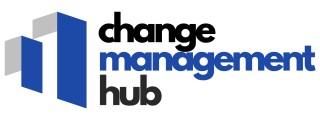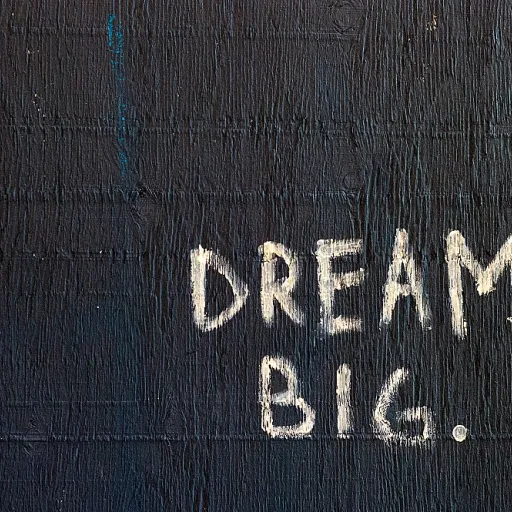
What does DEIJ mean in the context of change management
Defining DEIJ in Change Management
In the context of change management, DEIJ stands for diversity, equity, inclusion, and justice. These principles are not just buzzwords; they are essential values that shape how organizations, schools, and communities approach transformation. DEIJ efforts go beyond simply increasing representation. They focus on creating environments where people of all backgrounds—regardless of race, color, gender diversity, sexual orientation, socioeconomic status, or ethnic origin—feel a sense of belonging and have equitable opportunities to participate and thrive.
How DEIJ Relates to Organizational Change
Change management is about guiding people, programs, and systems through transitions. When DEIJ is integrated into this process, it ensures that the voices and experiences of students, faculty, staff, and community members are valued. This is especially important in higher education and the workplace, where discrimination, preferential treatment, and lack of inclusion can create barriers for BIPOC individuals and people of color. Embedding DEIJ into change initiatives helps address these challenges and supports anti-racist and human rights-focused action.
Key Concepts: Diversity, Equity, Inclusion, and Justice
- Diversity: Recognizing and valuing the differences among people, including race, gender, sexual orientation, and more.
- Equity: Ensuring fair treatment, access, and opportunity for all, especially those who have been historically marginalized.
- Inclusion: Creating environments where everyone feels welcomed, respected, and able to contribute fully.
- Justice: Addressing systemic barriers and promoting fairness in policies and practices.
Organizations and schools often form DEIJ committees to lead these efforts, aiming to foster a culture where equity inclusion and diversity equity are not just ideals but daily practices. This is especially relevant in the United States, where ongoing conversations about race, color, and social justice continue to shape the landscape of education and work.
For those interested in the intersection of DEIJ and organizational change, understanding voluntary separation schemes can also provide insight into how change impacts different groups and how equity and justice can be maintained during transitions.
Why DEIJ matters for successful change initiatives
The role of DEIJ in building trust and engagement
When organizations prioritize diversity, equity, inclusion, and justice (DEIJ) in change management, they create a foundation of trust. People—whether students, faculty, staff, or community members—are more likely to engage with new programs and initiatives when they feel seen and valued. This is especially true in higher education, where a sense of belonging can directly impact student success and faculty engagement. A focus on DEIJ means considering the experiences of people of color, BIPOC communities, and those from different socioeconomic backgrounds, sexual orientations, and gender identities. By addressing discrimination and promoting equity inclusion, organizations demonstrate a commitment to human rights and anti-racist action. This approach helps reduce resistance to change and fosters a culture where everyone can contribute.Driving better outcomes through representation and fairness
Change initiatives that ignore DEIJ risk reinforcing existing inequalities. For example, if a school launches a new program without input from a diverse deij committee or without considering the needs of students from various ethnic origins, the result may be preferential treatment for certain groups, often white people, while others feel excluded. This can lead to lower participation, decreased morale, and even active opposition to change. On the other hand, when organizations actively seek out and value diverse perspectives, they are better equipped to design solutions that work for everyone. This includes faculty staff, students, and the broader community. Equity and inclusion are not just buzzwords—they are critical for ensuring that change efforts do not leave anyone behind.Enhancing organizational reputation and compliance
In the United States and many other regions, there is increasing scrutiny on how organizations address race color, gender diversity, and inclusion justice. DEIJ efforts are not only about doing the right thing but also about meeting legal and ethical standards. Schools and workplaces that prioritize DEIJ are more likely to attract top talent, foster innovation, and maintain a positive reputation in their field. For those interested in understanding how voluntary separation schemes can intersect with DEIJ principles, especially in higher education or large organizations, you may find this resource on voluntary separation schemes in change management helpful.- DEIJ supports a sense of belonging for all, regardless of race, gender, or socioeconomic status
- It helps identify and remove barriers to participation and advancement
- Organizations that value DEIJ are better prepared for sustainable, positive change
Recognizing barriers to DEIJ in organizations
Common Obstacles to DEIJ Progress
Organizations aiming to advance diversity, equity, inclusion, and justice (DEIJ) in change management often encounter significant barriers. These challenges can slow down or even derail DEIJ efforts, especially in environments like higher education, schools, and workplaces where traditions and established norms are deeply rooted.
- Systemic Bias and Discrimination: Deep-seated biases regarding race, color, gender diversity, sexual orientation, and socioeconomic status can persist in policies and practices. This can lead to preferential treatment for certain groups, often white people, while people of color, BIPOC, and those from marginalized backgrounds face obstacles to advancement and a diminished sense of belonging.
- Lack of Representation: Faculty, staff, and leadership may not reflect the diversity of the community or student body. When people do not see themselves represented, especially in higher education or school programs, it can undermine trust and engagement in DEIJ initiatives.
- Resistance to Change: Some members of the community may view DEIJ as a threat to established traditions or as unnecessary. This resistance can be fueled by misconceptions about equity and inclusion, or by fears of losing status or influence.
- Insufficient Resources and Support: DEIJ committees and programs often lack the funding, training, or authority needed to drive meaningful action. Without strong backing from leadership, DEIJ work can become symbolic rather than transformative.
- Tokenism and Performative Actions: Superficial gestures, such as forming a DEIJ committee without real power or launching short-term initiatives, can undermine trust and fail to address deeper issues of justice and human rights.
Impact on Students, Faculty, and Community
These barriers do not just affect organizational processes—they directly impact people. Students and faculty from underrepresented groups may experience discrimination or exclusion, limiting their participation and success. Programs that do not address equity and inclusion can perpetuate disparities in education and the workplace, especially in the United States where historical inequities persist.
For DEIJ to become embedded in the culture, organizations must recognize these obstacles and take deliberate action. This includes listening to people of color, BIPOC, and other marginalized voices, and ensuring that DEIJ efforts address the realities of race, color, ethnic origin, and socioeconomic status.
For organizations seeking practical guidance on overcoming these barriers and launching effective change initiatives, resources like how to support effective change management can offer actionable steps and proven strategies.
Strategies for embedding DEIJ in change management
Building DEIJ into Everyday Change Practices
Embedding diversity, equity, inclusion, and justice (DEIJ) into change management is not a one-time event. It requires ongoing, intentional action across all levels of an organization. Whether in higher education, corporate settings, or community programs, the goal is to create a sense of belonging for everyone, regardless of race, color, gender diversity, sexual orientation, socioeconomic status, or ethnic origin.
- Establish a DEIJ Committee: Form a group with representation from faculty, staff, students, and community members. This committee can guide DEIJ efforts, review policies, and ensure that programs reflect the needs of people of color, BIPOC, and other marginalized groups.
- Integrate DEIJ into Communication: Use inclusive language in all communications. Make sure updates about change initiatives address equity and inclusion, and invite feedback from diverse voices.
- Review Policies for Equity: Regularly audit policies and practices for unintentional discrimination or preferential treatment. This includes recruitment, hiring, promotion, and program access, especially in higher education and school settings.
- Offer DEIJ Training: Provide ongoing education for faculty, staff, and students on anti-racist practices, human rights, and the impact of bias. Training should address issues like discrimination, gender diversity, and inclusion justice.
- Encourage Community Engagement: Involve the broader community in DEIJ initiatives. Gather input from people with different backgrounds and experiences, especially those who have historically faced barriers in the United States and beyond.
- Set Clear Goals and Accountability: Define what success looks like for DEIJ in your change management process. Assign responsibility for tracking progress and reporting outcomes to ensure ongoing action.
By weaving DEIJ principles into every stage of change, organizations can create environments where all individuals—students, faculty, staff, and community members—feel valued and supported. This approach not only supports human rights but also drives more effective and sustainable change.
Measuring the impact of DEIJ in change management
Key indicators for tracking DEIJ progress
Measuring the impact of DEIJ in change management is essential for understanding if your initiatives are truly making a difference. Organizations in higher education, schools, and workplaces need to move beyond intentions and focus on tangible outcomes. Here are some practical indicators to consider:
- Representation data: Track the diversity of students, faculty, staff, and leadership by race, gender diversity, sexual orientation, socioeconomic status, and ethnic origin. This helps identify gaps and monitor progress over time.
- Sense of belonging surveys: Regularly survey your community to assess whether people feel included and valued, especially BIPOC, people of color, and those from marginalized groups.
- Equity in opportunities: Analyze access to programs, promotions, and resources. Look for patterns of preferential treatment or discrimination, and ensure equity inclusion across all groups.
- Incident reporting and resolution: Monitor reports of discrimination, harassment, or bias. Track how quickly and effectively these issues are addressed, and whether anti-racist and inclusion justice actions are taken.
- Participation in DEIJ efforts: Measure engagement in DEIJ committee work, training, and community action. High participation from faculty staff, students, and leadership signals a culture shift.
Tools and methods for assessment
To ensure credibility and trust, use a mix of quantitative and qualitative methods. Data dashboards, anonymous surveys, focus groups, and interviews all provide valuable insights. In higher education and schools, collaboration with external experts can add authority and objectivity to your evaluation process.
Making results actionable
Sharing findings transparently with your community is key. Use the data to inform new DEI strategies, adjust existing programs, and set clear goals for improvement. Remember, measuring DEIJ is not just about compliance—it’s about building a culture where every person, regardless of race color, gender, or background, feels a sense of belonging and human rights are respected.
Case examples: DEIJ in real-world change management
Real-World Examples of DEIJ in Organizational Change
Organizations across the United States and globally are increasingly embedding diversity, equity, inclusion, and justice (DEIJ) principles into their change management efforts. These real-world cases highlight how DEIJ can drive meaningful transformation in education, business, and community settings.- Higher Education: Building Inclusive Campuses
Many universities have launched DEIJ committees to address discrimination and promote a sense of belonging among students, faculty, and staff. For example, some schools have revised recruitment processes to increase gender diversity and representation of people of color in faculty positions. Programs supporting BIPOC students and those from varied socioeconomic backgrounds are now more common, aiming to reduce barriers and foster equity inclusion across campus life. - Corporate Sector: Embedding DEI in Leadership Development
Companies are recognizing the importance of anti-racist practices and equitable advancement opportunities. Some have implemented training on unconscious bias, revised policies to ensure fair treatment regardless of race, color, sexual orientation, or ethnic origin, and set up accountability structures to monitor progress. These actions help create a workplace where all people, including those from underrepresented groups, feel valued and included. - Community Organizations: Advancing Human Rights and Justice
Nonprofits and advocacy groups are at the forefront of promoting justice and equity in their programs. By involving community members in decision-making and prioritizing the needs of marginalized groups, these organizations work to address systemic inequities. Initiatives may include anti-discrimination campaigns, support for people facing preferential treatment or exclusion, and education on human rights.
Lessons Learned from DEIJ-Focused Change Initiatives
- Intentional Action Matters
Success comes from deliberate strategies, not just statements. Whether in a school or workplace, DEIJ efforts require clear goals, ongoing education, and regular assessment. - Inclusive Engagement
Involving diverse voices, including faculty staff, students, and community members, leads to more effective and sustainable change. This helps address issues like discrimination and ensures programs reflect the needs of all. - Measuring Impact
Tracking outcomes related to diversity equity and inclusion justice is essential. Organizations often use surveys, focus groups, and data analysis to understand progress and identify areas for improvement.













